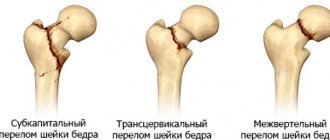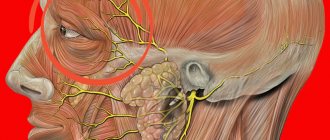Arsenic is one of the simple chemical elements on the periodic table. It owes its Russian name to mice and rats - after all, this substance is actively used to kill harmful rodents. And the Greek roots of the name “arsen” speak of its strength and power. Tasteless and odorless, it can be either organic or inorganic compounds. The environment and industrial products are not a complete list of where arsenic is found. In ancient times it was used as a remedy. Even in not so distant years, organic compounds of this element were used to treat syphilis, amebiasis, epilepsy and psoriasis.
And today it is still used in dentistry.
Its inorganic compounds are considered the most harmful. If it enters the body it causes poisoning. In order to prevent such consequences through ignorance or carelessness, you need to be aware of where arsenic is found, know the main symptoms and promptly seek first aid.
How it works
There are several options for the penetration of the element into the body:
- through the mouth;
- through the skin;
- by inhaling vapors.
Once in the body, arsenic quickly reaches red blood cells through the blood. By binding to globin, it reaches the liver, kidneys and other vital organs, primarily the heart. Damage occurs to the nervous system and digestive organs. Biological and chemical activity is disrupted, as well as respiratory activity at the cellular level. A dose of 0.05 grams can be lethal.
Poisoning has two forms of the disease:
- Spicy. It is characterized by a rapid course of the disease with corresponding symptoms when a large volume of this element penetrates the body. Today, cases of this form of arsenic poisoning are recorded as the result of a suicide attempt or murder, as well as accidental consumption or a workplace accident.
- Chronic. This form of poisoning in most cases is recorded as a result of occupational influence on the patient’s body during his work in industrial production, as well as during prolonged consumption of poisoned food, medications or water in small quantities. With prolonged exposure to the body, arsenic accumulates in tissues and organs, causing slow intoxication. This course of poisoning is most often observed in patients who work at enterprises in the chemical, fur, leather industries, as well as in agricultural production, where chemical fertilizers are actively used.
Arsenic is not eliminated from the body for a long time. Two weeks after its penetration into the body, the presence of the element is detected in the nails and hair of the victim. It continues to remain in the teeth and bones for no less long. The overwhelming majority of the element is excreted by the kidneys, and only ten percent by the intestines. Arsenic absorption occurs through the gastrointestinal tract, skin, and lungs. In this case, inorganic compounds are absorbed more easily.
Clinical picture
Signs of arsenic poisoning in humans are quite varied. Poisoning develops quite quickly and within 30 minutes if a large dose is ingested by any route, the symptoms will be pronounced. In such a short period of time, symptoms increase quite quickly, provided that the person has an empty stomach. In most such cases, everything ends in death, since in the absence of food the mucous membrane quickly absorbs toxins into the blood. Symptoms of arsenic poisoning will vary from person to person.
If arsenic was consumed in food, symptoms appear after a few hours. The following symptoms are observed in case of arsenic poisoning:
- Headache.
- Signs of intoxication (weakness, malaise).
- Stomach ache.
- Rice-water-like stool.
- When breathing, you can smell garlic.
- Intense thirst.
Since such poisoning affects most important organs and systems, the corresponding signs can be detected:
- From the cardiovascular system, palpitations, decreased blood pressure, and poor pulse filling are observed.
- From the nervous system, mental disorders, hallucinations, even coma can be observed.
- From the respiratory system, there is difficulty breathing, swelling of the larynx and lungs.
- From the gastrointestinal tract there is a burn of the larynx, ulcers of the stomach and intestines, as well as possible bleeding.
- When urinating, the urine becomes dark in color. Accompanied by the development of jaundice.
- The kidney tubules become blocked, which provokes the development of acute renal failure.
Causes
Arsenic can be found in the natural environment: in soil and rock - from where it reaches surface and groundwater; may also be in the air. In addition, it is actively used in various industries:
- to provide protection to wooden structures from putrefactive decomposition. True, recently its use has been sharply reduced, with the exception of special products;
- in pesticides, antifungal drugs, food additives (preservatives, dyes);
- in glass and copper production;
- when burning chemical production waste, coal, ore smelting (smoke);
- in semiconductors and other electronic devices;
- in the production of products that are aimed at exterminating rodents, parasites and insects;
- in the medical industry.
As a rule, poisoning occurs for a number of reasons that contribute to the penetration of toxic amounts of arsenic:
- as a result of inhalation of air that contains a dangerous element;
- when consuming food products that are saturated with harmful compounds, seafood is especially different in this regard;
- when drinking water contaminated with this element;
- as a result of prolonged stay in regions that have elevated levels of arsenic;
- during professional activities that involve contact with this harmful substance as a result of an accident;
- failure to comply with safety measures.
General information
Arsenic (As) is a metalloid, a transition element of group V of the periodic table. Its effect on the human body resembles that of heavy metals and their salts. More than 6 thousand organic and inorganic compounds of this substance are known, with varying levels of toxicity. The lethal dose of the component in its pure form, taken orally, is 0.3-0.6 grams. Common compounds are hydrogen arsenic and anhydride, sodium arsenite, potassium arsenite, calcium arsenite, osarsol, Parisian green. Poisoning occurs among workers in wood processing and agricultural enterprises.
Arsenic poisoning: symptoms
Signs of poisoning in the patient are observed approximately thirty minutes after the poison enters the body. If penetration occurs by inhalation or ingestion on an empty stomach, then the effect of the dangerous element, penetrating into the blood, occurs almost instantly. In this situation, the possibility of death greatly increases. When arsenic enters the body along with food, the effect of the toxic element in most cases takes longer to manifest itself - sometimes it takes hours.
Signs of poisoning:
- presence of headache;
- feeling of general weakness;
- the presence of nausea followed by vomiting;
- the presence of spasmodic pain in the abdominal area;
- the formation of stools that resemble rice broth;
- garlic-smelling breath;
- constant desire to drink, dehydration.
In case of poisoning, organs and systems are affected with the corresponding symptoms:
Cardiovascular. The patient experiences a decrease in blood pressure, disruption of the conduction of the heart muscle. A characteristic symptom is also a rapid heartbeat.
Nervous. The presence of delirium, often convulsions, and often a disorder of the nervous system leads the patient into a coma.
Respiratory. A spasm of the larynx occurs, the lungs swell, breathing becomes heavy, and the combination of disorders and respiratory failure makes it difficult for the patient to breathe.
Digestive. Damage to the system is characterized by burns of the pharynx, the formation of ulcers and other pathologies of the esophageal mucosa, and bleeding.
The blood also changes, which is manifested by hemolysis. As a result of the destruction of red blood cells and kidney damage, the urine becomes dark in color. Blood appears in it as a consequence of the development of renal failure.
Depending on what clinical signs appear in the patient, most forms of poisoning are distinguished. If symptoms of disorders of the digestive organs predominate, then, as a rule, this may indicate that the patient has a gastrointestinal form of poisoning. The greatest danger is the paralytic form, which has severe neurological symptoms and ends in coma.
Chronic poisoning, as a rule, begins to show characteristic signs in the period from 15 days to 2 months after arsenic enters the body. Toxins of the element affect the cerebral cortex, resulting in the development of encephalopathy. This negatively affects the peripheral nerves that regulate the activity of the lower extremities. If neuropathy is present, the patient experiences pain, leg weakness, etc.
Due to disturbances in the heart muscle, capillaries may dilate and myocarditis may develop. As well as hepatitis and other serious diseases. Chronic intoxication is also characterized by malaise, hair loss and other symptoms.
The systemic effect of arsenic is characterized by the following changes in the skin and nails:
- pigmentation and redness in the eyelids, armpits, neck, temples and other places;
- hyperkeratosis or severe growth of the superficial skin layer, thickening and peeling;
- light transverse lines on the nail bed.
As a carcinogen, arsenic causes the risk of developing malignant tumors of the skin, liver, lungs and other organs.
Stages of intoxication
After the toxin enters the circulatory system, the negative effect on the organs begins within just a couple of minutes.
Depending on the amount of poison received and the period before the first symptoms appear, toxicology distinguishes the following types of arsenic intoxication:
- Acute poisoning. Half an hour after taking a toxic substance orally, disturbances in the functioning of the cardiovascular and respiratory systems occur, and the development of renal failure occurs. The main symptom is partial or complete paralysis; the level of hearing and vision also decreases. If an antidote is not urgently administered to the patient, death will occur within 24 hours.
- Chronic poisoning. When systematically introduced into the body, the toxin accumulates in the cells. Due to the large accumulation of substances, tissues begin to deform, there is a decrease in blood flow to the internal organs, the endocrine system produces too much or, conversely, too little amount of biologically active substances. Symptoms of this stage of intoxication appear after just a couple of months of infection. But the symptoms are attributed by people to colds.
Diagnostics
The specialist interviews the patient about the characteristic signs and history of the disease, then begins a physical examination. It can be very difficult to immediately diagnose arsenic poisoning with one hundred percent probability, since the disease has quite different symptoms. To clarify the diagnosis, the following tests may be prescribed:
- blood (normal arsenic level is 30 mcg per l), as well as for the presence of anemia, leukopenia, etc.);
- urine (normal arsenic level is 100 mcg per l), as well as for the presence of hematuria, proteinuria, etc.);
- hair and nails. Arsenic is detected in the patient several months after poisoning.
Laboratory tests are also carried out. Since this element is impenetrable to x-rays, its accumulation is easily detected on x-rays of the abdominal cavity.
First aid
The poisoned victim must be kept calm and given water. Drinking should be frequent, but in small doses.
- An ambulance must be called immediately.
- If the patient is unconscious, you need to lay him on his side.
- If there are no signs of life, cardiopulmonary resuscitation is necessary.
If the victim is conscious, it is necessary to free his body from the remnants of the toxin. To do this, you need to rinse the stomach using a sufficient amount of water. It is also recommended to use salt as an additive; two spoons per liter of water will be enough. Arsenic on the surface of the skin can be removed using water, soap and a washcloth.
The use of activated carbon is also recommended. Unfortunately, it does not bring much effectiveness in this case, since it weakly binds to this poison. It is not recommended to take laxatives.
If the patient has a mild form of poisoning, then hospitalization may not be necessary. But victims who are in severe and moderate severity require hospitalization.
Treatment
If a patient is diagnosed with acute arsenic poisoning and does not lose consciousness, the first step is to induce vomiting using ipecac syrup.
Further, the course of treatment for this disease involves the following therapy:
- Oxygen inhalation. If poisoning occurs in pairs.
- Infusion therapy. Sodium bicarbonate is introduced, which helps reduce the effects of poisoning and also maintains blood pressure levels.
- Glucose-novocaine mixture. It is administered when severe hemolysis occurs and hemoglobin is present in the urine.
- Eufillin. This medicine is used to treat difficulty breathing in the victim.
- Unithiol. It is a specific antidote. It is administered intravenously or intramuscularly. It binds well to poison and the resulting insoluble substances are excreted by the kidneys. If the victim has a mild injury and tests show an insignificant concentration of arsenic in the blood serum and urine, the drug is administered at a dose of 2-3 mg/kg four times a day, and then one to two times for ten days. Patients who have more severe signs of poisoning with high levels of arsenic are treated similarly to the first case, but the dose is increased to 3-5 mg.
- Forced diuresis and hemodialysis. If, as a result of arsenic hydrogen poisoning, a patient suffers from renal failure, then they are usually treated with exchange blood transfusion and hemodialysis. In this case, the use of dimercaprol is considered ineffective.
- D-penicillamine. It is mainly used for treatment when a chronic form of poisoning is diagnosed. The drug is administered orally, the course of treatment with the drug is five days. The most pronounced side effects that can occur after using penicillamine are the formation of a rash, thrombocytopenia, and others.
Summing up the conversation about the treatment of this dangerous element, we should once again remember that preventing poisoning is much easier than dealing with the consequences later. Indeed, at present, in fact, there are no sufficiently effective means to combat arsenic poisoning. However, many measures, including the use of drugs such as 2,3-dimercapto-1-propanesulfonate, as well as those discussed above, can bring some benefit. A remedy such as succimer is also used during treatment. Medicines are available both in the form of tablets and for injection.
In cases where it is not possible to accurately diagnose poisoning or the treatment measures taken are not effective enough, specialists develop a number of measures to reduce the severity of symptoms.
Symptoms
Arsenic poisoning can be acute, with a single large dose entering the body, and chronic, with prolonged exposure to small doses.
Symptoms of arsenic poisoning in humans in acute form:
- Sharp general weakness;
- Characteristic garlic odor from the mouth;
- Headache, dizziness, disorientation, mental disorders;
- Palpitations, low blood pressure;
- Difficulty breathing, bronchospasm, cough;
- Yellowness of the skin;
- Dark colored urine, blood in the urine;
- Metallic taste in the mouth, nausea, vomiting mixed with blood, frequent bowel movements, cramping pain in the abdomen.
Signs of arsenic poisoning appear very quickly. If poison enters through the oral cavity, symptoms of intoxication appear within 30-40 minutes, and if vapors of a toxic substance are inhaled, they appear instantly.
Signs of acute poisoning:
- Nausea, vomiting.
- Loose stools.
- Spasmodic pain in the abdominal cavity.
- Muscle weakness.
- Drying of mucous membranes.
- Headache.
- Cardiopalmus.
- Low blood pressure.
- Increased thirst.
- Spasm of the larynx.
- Limb spasms.
- Edema of the pulmonary system.
- Internal bleeding caused by the appearance of ulcers on the digestive organs.
- Dark brown urine.
- Yellowness of the skin.
In the absence of medical assistance, the symptoms of poisoning in the victim noticeably intensify. Long-term effects of arsenic on the body appear after 3-4 weeks.
The nature and degree of manifestation of acute damage by this toxin depends on the scale of the dose that entered the body. If it is very high, then poisoning can be fatal. Arsenic exposure also increases the likelihood of cancer in important organs such as the kidneys, lungs, liver, bladder and prostate.
The main symptoms of poisoning with arsenic compounds and the element in its pure form include the following:
- pain of varying degrees in the stomach;
- nausea turning into vomiting;
- diarrhea;
- slow regeneration of leukocytes and erythrocytes;
- cardiac dysfunction;
- changes in the elasticity of blood vessels and their damage;
- numbness in the extremities (lower and upper);
- paralysis of some parts of the body;
- convulsions;
- the appearance of a “garlic” odor from the mouth;
- partial blindness.
Men who work in industries associated with the harmful effects of arsenic may diagnose themselves with the following changes:
- abnormally rapid growth of the outer layers of the epidermis (hyperkeratosis);
- peeling and peeling of the skin even in those areas of the body that are protected by clothing during work;
- pigment formations in the area of the eyelids, temples, necks, chests in the form of red spots;
- white stripes on fingernails and toenails.
The characteristic symptoms of arsenic poisoning depend on the dose of the substance received.
For arsenic hydrogen, the lethal indicators are as follows:
- inhalation of gas for 15 minutes with a concentration of 0.6 mg/l;
- 5 min – 1.3 mg/l;
- several breaths – 2-4 mg/l;
- instantly – 5 mg/l.
Signs of arsenic poisoning in acute form are quite characteristic. This specificity helps to identify the problem in time:
- temperature increase;
- thirst, dehydration;
- vomiting with nausea;
- sharp pain of varying intensity in the stomach;
- decreased diuresis;
- weakness;
- loose stools that look like rice broth;
- numbness of hands and feet;
- metallic taste in the mouth;
- convulsions;
- partial loss of vision;
- the characteristic smell of garlic from the mouth of a poisoned person;
- heart failure, tachycardia, decreased blood pressure.
These symptoms of arsenic poisoning indicate an acute form. But with constant contact with this poison (for example, when working in production where Arsenicum is used), the intoxication takes on a chronic form.
Chronic arsenic poisoning will not be immediately noticeable, but it will eventually result in very serious problems due to the growing amount of poison that gradually accumulates in the body:
- the upper layers of the skin grow and become scab-like (hyperkeratosis);
- whitish stripes appear on the nail plates of the hands and feet;
- the skin peels and flakes off even in those parts of the body that have always been protected from contact with poison;
- red spots appear on the head, chest, armpits and scrotum;
- encephalopathy and neuropathy develop;
- convulsions;
- destruction of red blood cells - hemolysis;
- toxic hepatitis;
- burns of the larynx, ulcers of the esophagus, bleeding in the gastrointestinal tract;
- renal failure with blood in urine darkened due to hemolysis;
- coma.
Symptoms of poisoning depend on the specific compound that enters the body, the amount of it, and whether the poisoning is acute or chronic. With high doses of highly toxic compounds (for example, arsenous anhydride), symptoms of acute poisoning quickly develop, and with prolonged intake of small doses of arsenic from drinking water, a different clinical picture slowly develops.
Symptoms of subacute arsenic poisoning can develop both in survivors of acute poisoning and in cases of prolonged exposure to the poison from the environment. Acute poisoning.
The earliest symptoms of acute arsenic poisoning when ingested are signs of gastrointestinal damage (nausea, vomiting, abdominal pain, diarrhea). They appear within the first minutes, at most a few hours later.
Diarrhea from arsenic poisoning is severe, almost like cholera, and the stool may look like rice water. Both hypovolemia and the direct effect of arsenic can lead to damage to various organs.
Cardiovascular abnormalities range from sinus tachycardia and orthostatic hypotension to shock. Acute encephalopathy is possible, progressing over several days and manifested by confusion, coma and epileptic seizures.
Its cause is considered to be cerebral edema and pinpoint hemorrhages in the brain. Acute lung injury syndrome, ARDS, respiratory failure, hepatitis, hemolytic anemia, acute renal failure, rhabdomyolysis and death are possible.
AKI may result from renal ischemia caused by hypotension, precipitation of myoglobin or hemoglobin in the renal tubules, cortical necrosis, or the direct effect of arsenic on the renal tubules.
Subacute poisoning
After acute arsenic poisoning, new symptoms of damage to the central nervous system, gastrointestinal tract, lungs, cardiovascular system, hematological and dermatological disorders may persist for days or weeks or appear.
Possible development of persistent encephalopathy (headache, stupor, confusion, memory impairment, personality changes, irritability, hallucinations, epileptic seizures). Abducens nerve lesions and bilateral sensorineural hearing loss have been reported.
Neuropathies usually develop 1-3 weeks after acute poisoning, but sometimes earlier. Possible dermatological manifestations include alopecia areata, eruptions herpetiformis on the oral mucosa, diffuse macular itchy rash and pityriasis-like desquamation without itching.
Occasionally, Mesovsky stripes are observed - transverse white stripes on the nails 1-2 mm wide. In case of subacute poisoning with inorganic arsenic compounds, nephropathy, fatigue, decreased appetite and weight loss, torsade de pointes and persistent symptoms of gastrointestinal damage are also possible.
Chronic arsenic poisoning
Chronic poisoning with small amounts of inorganic arsenic compounds is usually caused by occupational exposure or exposure to the environment. Symptoms of gastrointestinal tract damage (nausea, vomiting, diarrhea) are less common than with acute poisoning.
Long-term consumption of poison in drinking water is associated with an increased risk of skin lesions (including malignant neoplasms), arterial hypertension, diabetes mellitus, lesions of small arteries and various malignant neoplasms of internal organs.
The skin is very sensitive to the toxic effects of arsenic. Hyperpigmentation, hyperkeratosis, squamous and basal cell carcinoma, and Bowen's disease have been described.
Population studies have shown that chronic exposure to arsenic increases the incidence of diabetes mellitus, restrictive respiratory disorders, and vascular disease. In particular, a connection was identified between long-term exposure to poison and damage to the arteries of the legs discovered in Taiwan, accompanied by increasing tissue ischemia up to gangrene of the feet.
The most common neurological symptoms include encephalopathy and neuropathies.
Symptoms of poisoning depend on the characteristics and amount of the substance that enters the body. The difference between arsenic-derived substances is their concentration and potency. For example, high doses of arsenic anhydride contribute to the rapid development of symptoms of acute intoxication.
Acute poisoning
The earliest symptoms of arsenic intoxication are:
- damage to the stomach and intestinal tract with the appearance of nausea and vomiting, abdominal pain and diarrhea;
- damage to various internal organs;
- cardiac and vascular disorders accompanied by sinus tachycardia or orthostatic hypotension and shock;
- the appearance of acute or progressive encephalopathy, which is accompanied by confusion, coma and epileptic seizures;
- swelling of the membranes of the brain;
- pinpoint cerebral hemorrhages;
- acute lung injury;
- the appearance of respiratory failure;
- the appearance of hepatitis and hemolytic anemia;
- acute renal failure and renal ischemia.
Arterial hypotension and necrotic changes in the cortex are especially severe due to direct exposure to arsenic or its derivatives.
Subacute poisoning
Subacute arsenic poisoning is characterized by the persistence or appearance of new symptoms within a day or several weeks:
- damage to lung tissue;
- disorders of the cardiac and vascular systems;
- the appearance of hematological failures and dermatological disorders;
- development of a persistent form of encephalopathy, accompanied by headache, a feeling of severe stupor and confusion;
- brain lesions with memory impairment and severe personality changes, irritability, hallucinations and severe epileptic seizures;
- damage to the abducens nerve;
- development of bilateral sensorineural hearing loss;
- the appearance of alopecia areata, herpetiform rashes on the oral mucosa, diffuse patchy itchy rash and pityriasis-like skin peeling.
A feature of subacute poisoning with inorganic arsenic compounds is the development of nephropathy, fatigue, decreased appetite and sudden weight loss, torsades de pointes, as well as persistent symptoms of damage to the stomach and intestinal tract.
Chronic poisoning
Poisoning in a chronic form is typical for exposure to a small amount of inorganic arsenic compounds on the body. Chronic arsenic intoxication is accompanied by:
- slight nausea or one-time vomiting;
- mild diarrhea;
- skin lesions, including malignant neoplasms;
- arterial hypertension;
- diabetes mellitus;
- damage to small arteries;
- the appearance of malignant internal neoplasms;
- hyperpigmentation;
- hyperkeratosis;
- squamous cell and basal cell oncology;
- Bowen's disease.
Studies have shown that chronic exposure to arsenic increases the risk of diabetes, respiratory restriction and vascular disease, as well as neuropathy and encephalopathy.
Causes and symptoms
Arsenic is common in nature in organic and inorganic compounds and is used in industrial production and medicine (dentistry). The semimetal is a highly toxic element, so arsenic poisoning is extremely dangerous.
It can be caused by negligence or on purpose. Knowledge of clinical signs will help you correctly navigate, determine the degree of poisoning and correctly provide emergency care.
Causes
Arsenic poisoning occurs through the skin, gastrointestinal tract and lungs. Its inorganic compounds accumulate in internal organs. Subsequently, they are quickly removed from them and are stored only in the hair, skin and nails.
Signs of general intoxication in acute arsenic poisoning:
- a metallic taste appears in the mouth, a scratching sensation is felt in the pharynx and mouth. Severe symptoms appear after an hour and a half;
- gastrointestinal disorders - severe abdominal pain, profuse vomiting, diarrhea with rice water stool;
- catarrhal symptoms - runny nose, conjunctivitis, difficulty breathing, hoarseness of voice.
- temperature increase;
- Sensory and motor disorders gradually appear - muscle pain and cramps, ataxia, muscle hypotension. Paresis of a flaccid nature develops. The legs are more severely affected;
- seizures
- Severe jaundice may develop;
- acute renal failure
Signs of intoxication in chronic arsenic poisoning:
- severe weakness;
- hyperpigmentation;
- scaly dermatitis;
- small calluses or warts on the palms and soles;
- anemia;
- bleeding gums;
- tooth damage;
- tracheitis;
- laryngitis;
- bronchitis.
Due to long-term exposure to small doses of arsenic, signs of cancer may appear.
Arsenic and dentistry
Often, patients who are planning to go to the dentist are concerned about the question of whether they risk getting poisoned by arsenic used in dental treatment? In fact, in the past, arsenic paste was very often used when filling teeth. As a result of the effect of this drug on the nerve cells of the tooth, they died, and the tooth stopped hurting. The drug was placed under a temporary filling. However, in order to avoid complications, we did not wear such a filling for a long time. Since, although very small, there was a possibility of poisoning, a metallic taste could even be felt in the mouth. In most cases, damage was caused to the tissues surrounding the tooth - swelling and inflammation developed, and could also result in bone necrosis and tooth loss.
If the procedure is performed correctly, it is almost impossible to get poisoned when filling teeth with arsenic. Currently, arsenic paste has been replaced by other products; as a rule, these preparations do not contain toxic substances.
Prevention
Anyone can be poisoned by arsenic. But certain categories of citizens are at increased risk of being exposed to arsenic. Among them:
- working in companies that process wood with this element;
- living in regions where there are elevated levels of arsenic in natural conditions;
- working in electronics, glass, metalworking and other industries where this poison is used.
To reduce the risk of arsenic poisoning, you must follow the safety rules:
- Drink water that has only been purified, eat foods whose quality you have no doubt about.
- Do not store medications containing arsenic at home. If for some reason this cannot be done, then store them in places inaccessible to children. We must not forget that children's bodies are more susceptible to the effects of poison.
- Pregnant women should be especially careful, since harm is caused not only to the expectant mother, but also to the child who will be born.
- When working in a workplace where arsenic is used, for example, wear protective equipment: clothing, a mask and gloves. Do not burn wood material treated with arsenic.
- Those living in areas where there is a high level of arsenic in nature should drink purified water and have limited contact with the soil.
The rules of prevention are simple, but if you follow them impeccably, you can protect yourself from such a complex and dangerous disease.












